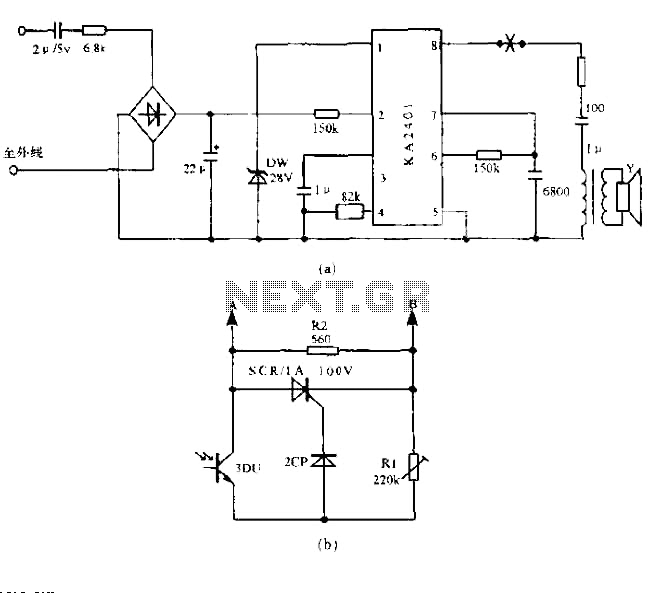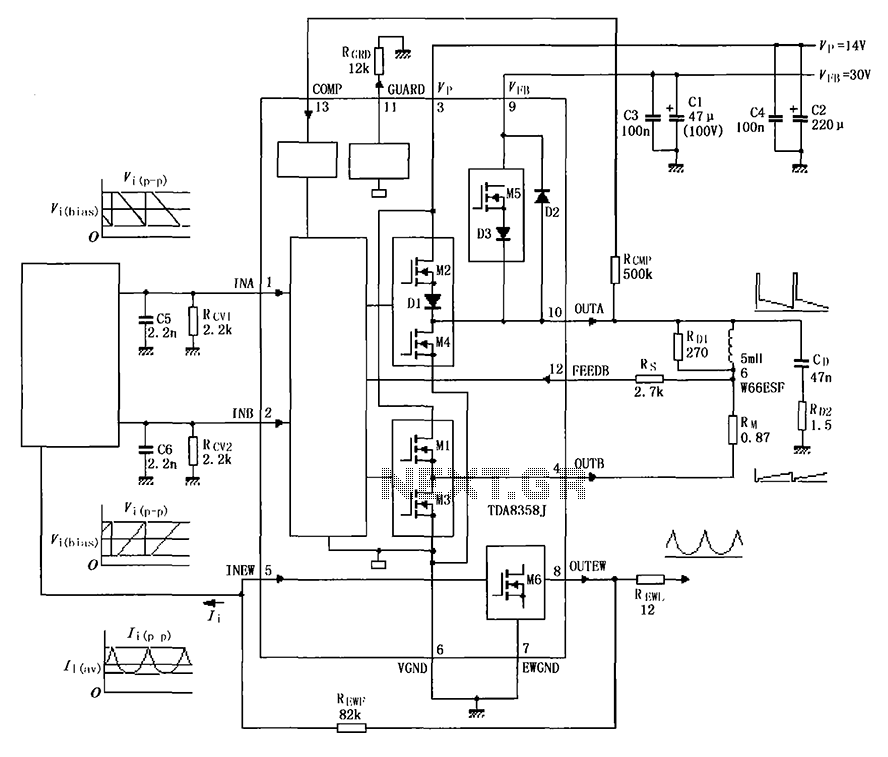
Metal Detector Circuit with Diagram and Schematic

A simple metal detector circuit diagram and schematic using a single transistor and a radio. This metal detector/sensor project is easy to make and is an application of a Colpitts oscillator.
The metal detector circuit utilizes a single transistor in conjunction with a radio receiver to detect the presence of metallic objects. The core of this design is based on the Colpitts oscillator, which is known for its simplicity and effectiveness in generating oscillations at radio frequencies.
In this schematic, the transistor acts as the main amplifying component, forming the oscillator circuit with the inclusion of capacitors and an inductor, which are essential for determining the oscillation frequency. The Colpitts configuration employs two capacitors in series with an inductor, creating a resonant tank circuit. This tank circuit resonates at a specific frequency that can be tuned to detect various metal types based on their conductive properties.
When a metallic object comes into proximity of the detector, it alters the inductance of the coil, resulting in a change in the frequency of oscillation. This frequency shift can be detected by the radio receiver, which is tuned to the oscillator's frequency. A simple audio output can be generated, indicating the presence of metal.
The circuit requires a power supply, typically a battery, which powers the transistor and the radio. Careful selection of the transistor is crucial, as it must have sufficient gain to amplify the weak signals generated by the oscillator. Additionally, the choice of the inductor and capacitors will affect the sensitivity and range of the metal detector.
Overall, this metal detector project exemplifies a practical application of basic electronic components and principles, making it an excellent choice for educational purposes or hobbyist experimentation.A simple metal detector circuit diagram and schematic using a single transistor and a radio. This metal detector/sensor project is easy to make and is an application of Colpitts oscillator.. 🔗 External reference
The metal detector circuit utilizes a single transistor in conjunction with a radio receiver to detect the presence of metallic objects. The core of this design is based on the Colpitts oscillator, which is known for its simplicity and effectiveness in generating oscillations at radio frequencies.
In this schematic, the transistor acts as the main amplifying component, forming the oscillator circuit with the inclusion of capacitors and an inductor, which are essential for determining the oscillation frequency. The Colpitts configuration employs two capacitors in series with an inductor, creating a resonant tank circuit. This tank circuit resonates at a specific frequency that can be tuned to detect various metal types based on their conductive properties.
When a metallic object comes into proximity of the detector, it alters the inductance of the coil, resulting in a change in the frequency of oscillation. This frequency shift can be detected by the radio receiver, which is tuned to the oscillator's frequency. A simple audio output can be generated, indicating the presence of metal.
The circuit requires a power supply, typically a battery, which powers the transistor and the radio. Careful selection of the transistor is crucial, as it must have sufficient gain to amplify the weak signals generated by the oscillator. Additionally, the choice of the inductor and capacitors will affect the sensitivity and range of the metal detector.
Overall, this metal detector project exemplifies a practical application of basic electronic components and principles, making it an excellent choice for educational purposes or hobbyist experimentation.A simple metal detector circuit diagram and schematic using a single transistor and a radio. This metal detector/sensor project is easy to make and is an application of Colpitts oscillator.. 🔗 External reference





